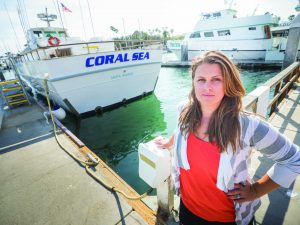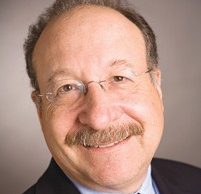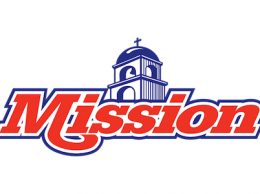Jamie Diamond is thrilled that the region’s fishing ban has been lifted but her sportfishing business is still reeling from the Refugio oil spill.
Diamond has owned and operated Santa Barbara-based Stardust Sportfishing with her husband Jason for the past 20 years. They take private charters and open parties of tourists and local regulars fishing from Carpinteria to the Channel Islands and campgrounds along the coast up to Point Conception, including Refugio.
“We had to spend a lot more money in fuel (about double) to go all the way up toward Point Conception,” Diamond told the Business Times. “It put a strain on what we normally do; we were displaced from regular fishing grounds. Reservations are down even though they are historically up every year. I’ve had to fight tooth and nail for every reservation.”
The Plains All American Pipeline oil spill on May 19 that soiled the Refugio State Park coastline and let thousands of gallons of crude oil slip into the Pacific has left the tourism and seafood industries to deal with short-term losses and an uncertain future. The spill has meant more revenue for an Oxnard-based helicopter touring business and the region’s oil spill responders, but the costs far outweigh the benefits.
The Diamonds’ decision to expand their business couldn’t have come at a worse time. Stardust bought its second boat, Coral Sea, weeks before the spill and she was supposed to go out on her third day of operation on May 19. But the spill scared would-be customers and it didn’t have enough reservations to justify leaving the harbor for five days. It has since averaged one to four trips a week, instead of an expected six.
“We’re about as mom-and-pop as it gets,” said Diamond, adding that fishing had been better than ever prior to the spill.
Their business relies heavily on hotel and campground referrals this time of year. Diamond has been going to different hotels with her husband and kids to let them know Stardust Sportfishing is still running while also constantly updating social media and other sites.
Diamond recently received a dose of good news: Fisheries spanning 138 square miles of ocean from Canada de Algeria to Coal Oil Point reopened June 29 after more than a six-week closure. The Office of Environmental Health Hazard Assessment found that the area’s finfish, shellfish and invertebrates are safe to eat.
The bad news is people are still afraid that fish from the Santa Barbara region will make them sick. Fishermen can’t sell local fish because the name Santa Barbara seafood is tainted, said Diamond, who’s looking to invest in a public relations campaign.
“I would like to see the areas restored to better than baseline levels,” said Diamond, adding that adding artificial reefs would be a nice touch. “I’d also like to see (Plains fund) a (public relations) campaign to relaunch the Santa Barbara fishing and seafood industry. The commercial fishermen are taking a huge hit; Santa Barbara seafood is a tough sell.”
The tourism industry is also struggling to correct people’s perception that the whole coast is ruined. Typically, around 25,000 people visit the Santa Barbara on summer days and spend about $4 million — translating to approximately $850 million annually, according to Jeanette Webber, owner of the Santa Barbara Hotel Group, which manages five hotels in the area.
“We actually lost about a third of our reservations over the Memorial Day weekend; luckily we’ve been able to partially refill that with (the oil spill) workers,” she told the Business Times. “But we’re still feeling the impacts. We usually get a lot of European guests this time of year and we’ve seen people immediately changing their plans on social media to go elsewhere.”
It will take a long time to change people’s perceptions, Webber said.
“We’re talking about the livelihood for so many people here who are employed in the tourism, restaurant and adventure industries,” she said.
Houston-based Plains All American Pipeline may eventually have to pay for a public relations campaign for the region. The growing $96 million cleanup tab doesn’t include claims, fines, penalties or lost business and tourism revenues.
Recovery to take years
If things play out like the Cosco Busan spill in the San Francisco Bay, Santa Barbara’s recovery will take at least four years.
The Cosco Busan spill occurred in November 2007 but a settlement with the responsible party wasn’t reached until September 2011. The Regal Stone Ltd. and Fleet Management Ltd. 90-foot vessel struck the Bay Bridge and spilled 53,000 gallons of fuel, damaging 3,367 acres of shoreline habitat.
The settlement ensured local, state and federal agencies were reimbursed for lost recreational revenues and that money went toward improving coastal access and restoring damaged facilities, habitat and fisheries.
Some restoration projects, like the eelgrass and bird improvements, are still in progress today, according to Natalie Cosentino–Manning, a marine habitat restoration specialist at the National Oceanic and Atmospheric Association Restoration Center.
It took state and federal agencies more than four years to prepare the Damage Assessment and Restoration Plan Environmental Assessment, which quantified the damage through data collection, public outreach, an initial restoration plan, more public outreach and the final restoration plan. The Refugio oil spill is in the data collection phase, said Chuck Bonham, California Department of Fish and Wildlife director.
That assessment report is then submitted to the responsible party, who has to accept or reject the settlement. If rejected, it goes to federal court and becomes a civil case. The Cosco Busan case resulted in a $44.4 million settlement: $18.8 million went to various cities and counties for projects that enhanced public piers, parks, bike paths, boat ramps and fishing areas and compensated for lost trips, boating and fishing (totaling 1 million-plus lost-user days); $5 million to compensate for the 6,849 birds that were killed; $4 million for the 3,367 acres of impacted shoreline habitat; and $2.5 million for the 14-29 percent of herring spawn lost and impacted eelgrass.
Not included were commercial impacts or private third-party claims. Those are usually handled more efficiently, often within one to three years after the spill, Cosentino–Manning said.
“This is a fragile coastline, it’s iconic,” Bonham said. “Local economies ride on it, recreation rides on it. This is something much more than (an) additional spill. It’s personal.”
Oil spill bonanza
The spill has been a boon for some tri-county businesses.
Aspen Helicopter has been providing an aerial perspective for companies like Clean Seas, who contracted with the Oxnard-based helicopter touring company to direct oil containment efforts from the sky. Clean Seas, a Carpinteria-based oil extraction firm, was one of the first responders to the spill and helped contain what oil they could through booms and skimming.
Plains foots the bill for Clean Seas’ operations, part of about $100 million Plains has spent so far. But the running tab doesn’t include possible litigation that Assemblymember Das Williams, D-Santa Barbara, hinted at during an oversight hearing June 26.
California’s Oil Spill Prevention and Response Act requires the operator to report the spill to the California Office of Emergency Services within 15 to 30 minutes after it is discovered, Williams said.
“Plains did not meet that criteria,” said Mark Ghilarducci, director of the governor’s office of emergency services.
If Plains notified Clean Seas earlier, it could’ve “significantly reduced the amount of oil spilled,” Clean Seas General Manager Ike Ikerd said.
Some fishermen and homeowners have already filed lawsuits. Keller Rohrback LLP and Lieff Cabraser Heimann & Bernstein LLP filed a suit against Plains on behalf of Santa Barbara sea urchin diver Stace Cheverez.
“In Santa Barbara, those environmental impacts translate to profound economic impacts,” the complaint reads. “In the short term, the oil from Plains All American’s ruptured pipeline has closed fishing grounds and shellfish areas, and caused canceled reservations from tourists who otherwise would be spending their money on hotels, restaurants, kayaking or surf trips and fishing charters.”
The oil spill has also led to another case for Barry Cappello, the managing partner of Cappello & Noël LLP, who lodged a suit against Plains on behalf of 3,000 beachfront property owners.
The spill’s impact has also given a boost to environmentalists like the Environmental Defense Center and the Community Environmental Commission. The Santa Barbara-based nonprofits urge the use of clean energy sources like wind and solar instead of fossil fuels.
The Santa Barbara County Board of Supervisors set aside $400,000 of its budget to fund CEC’s alternative energy feasibility study — Community Choice Energy. The Santa Barbara City Council will put up $50,000 and the CEC will fund the remainder of the estimated $500,000 study that would allow local governments to purchase electricity from cleaner sources like wind, solar and geothermal and deliver it through existing infrastructure.
The EDC has been busy aiding the cleanup and fielding questions from concerned citizens while benefiting from some new members and support, said Linda Krop, chief counsel at EDC.
In the meantime, Williams and state Sen. Hannah-Beth Jackson, D-Santa Barbara, are sponsoring legislation that could prevent future spills and make responses more efficient.
Two of Jackson’s bills passed through the Assembly Natural Resources Committee June 29: Senate Bill 414, the Rapid Oil Spill Response Act, which Jackson said would help make oil spill response faster, more effective and more environmentally friendly, and Senate Bill 788, which would ban new offshore oil drilling in a Marine Protected Area in the Santa Barbara Channel known as Tranquillon Ridge, Jackson said.
“If we don’t create greater accountability, if we don’t have greater transparency and honesty in the process, if we don’t remove the oil industry from taking control, controlling the messaging and controlling the information, the public will not be with us, and rightly so,” she said.






 Print
Print Email
Email


















